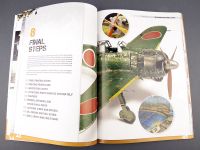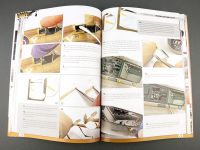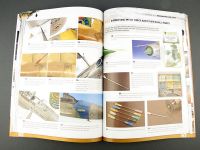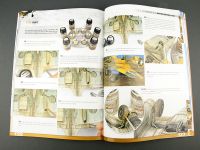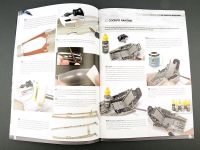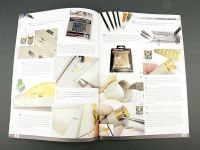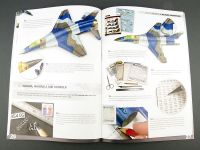AMMO of Mig Jimenez | Encyclopedia of Aircraft Modelling Techniques Volume 5: Final Steps
Reviewed by Kevin Futter
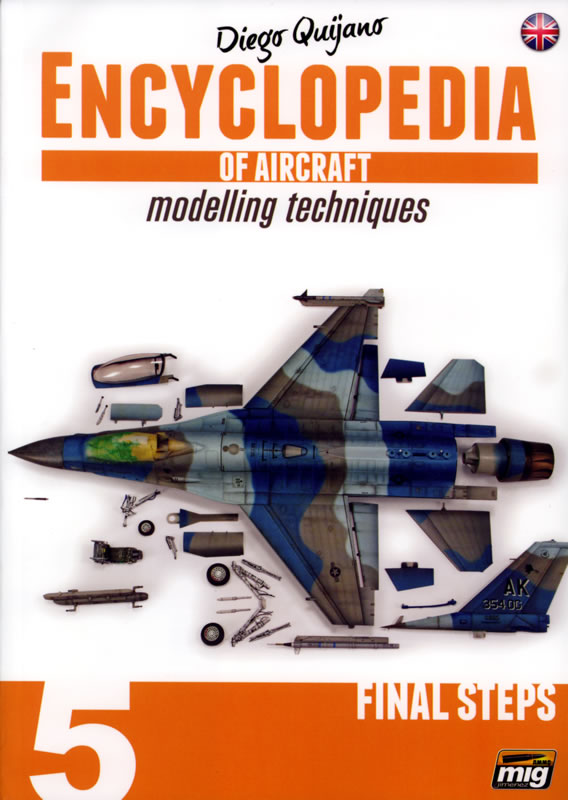
Spanish firm AMMO of Mig Jimenez specialises in finishing products for scale models, and also publishes The Weathering Magazine. The company's publishing endeavours have now been expanded with the release of the fifth and final volume in an ambitious series entitled Encyclopedia of Aircraft Modelling Techniques. The series is authored by well-known Spanish modeller Diego Quijano, with Volume 5 focussing on the final steps of assembly and painting.
This title weighs in at 156 pages, and despite its Spanish provenance, the text is in English throughout (it's also available in Spanish). While the number of typos and expression errors continues to improve compared with the earlier volumes, there are still a few minor ones present. Nevertheless, I encountered nothing that would interfere with comprehension of the material.
This final volume is comprised of two 'chapters', with each divided into several sub-sections. The entirety is presented as a series of magazine-style photo-essays (note that the section numbering continues from Vol. 4):
- 7 Weapons and External Load
- 7.1 Hardpoints and Pylons
- 7.2 Drop Tanks
- 7.3 Missiles
- 7.4 Bombs
- 7.5 Automatic Cannons and Machine Guns
- 8 Final Steps
- 8.1 Final Painting Steps
- 8.2 Painting Propellers
- 8.3 Navigation Lights
- 8.4 Attaching Parts Painted Separately
- 8.5 Canopies
- 8.6 Probes, Antennas, and Other Small Parts
- 8.7 Antenna Wires and Rigging
- 8.8 Oil, Grease and Fuel Stains
- 8.9 Dust, Earth and Mud Stains
In my reviews of the preceding volumes (Vol. 1, Vol. 2, Vol. 3, Vol. 4), I gave a brief description of each section. That approach isn't really practical with this volume, however, as there are many sections to cover, and a substantial amount of overlap between them. Instead, I'll provide a more general impression of the contents, with discussion of particular elements where they're noteworthy.
The finishing of scale aircraft models is a highly-subjective area of the hobby, and when it comes to aircraft, it can also be highly contentious. One of the more extreme and stylised approaches has come to be known as The Spanish School, and given the Spanish provenance of both publisher and author, it's no surprise that this book uses that approach. All the included models are heavily (and in some cases, extremely) weathered, and if that isn't your cup-of-tea, then, as the author suggests in Volume 4, this book is not for you.
And while I don't personally subscribe to the so-called Spanish School, I also prefer to take a more positive approach to the material presented, and learn what I can from it. And it's in the sheer number and variety of techniques discussed that this book really hits the mark, elucidating everything from enamel and oil washes, to weathering effects with graphite and coloured pencils.
There's also some great advice about attaching clear parts and representing navigation lights, as well has how to deal with all those fiddly parts that can make the final stages of a build both tedious and frustrating. There's a degree of overlap with the previous volume on weathering, but nothing that feels too repetitive or redundant.
The one minor criticism I would level at the book is that it almost exclusively utilises AMMO of Mig products. Being a house publication, this is perhaps unavoidable, but it does read at times more like an extended advertorial than a technique book. Still, substituting a recommended product with something similar from your own toolkit should be pretty straightforward. And if you don't have such products at your disposal, then the AMMO of Mig offerings will be as good a place as any to start.
Sample Pages
Below is a random selection of pages from the book, to give you a feel for the content and presentation.
The quality of the photos is uniformly excellent, and the captions and explanations are largely clear and easy to follow. Some of the techniques described will take some practice to master, especially if the aim is a more restrained result, but that's true of a great many things in modelling, and indeed, in life itself.
Bonus Volume: F-16 Aggressor
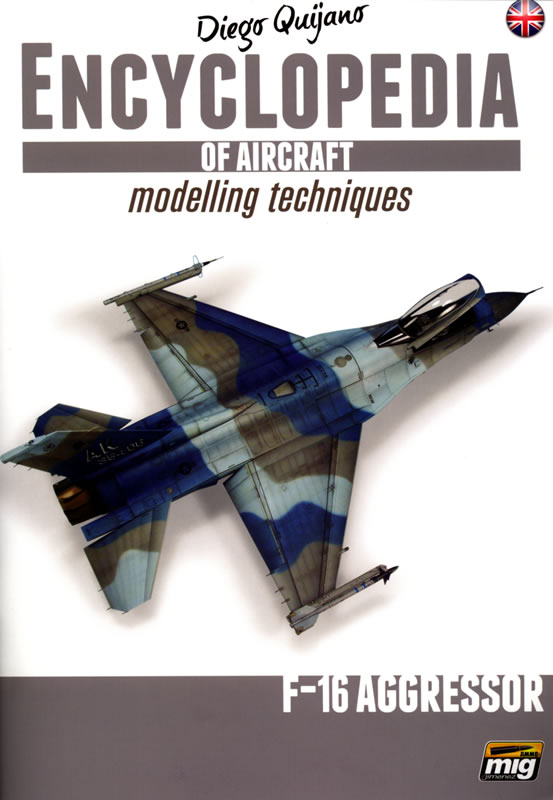
This final volume of the encyclopedia comes with a bonus 44-page publication that takes Tamiya's 1/48 scale F-16C/N "Aggressor Adversary" kit, and describes the build process from start to finish, utilising some of the techniques and approaches outlined across the five volumes. This is a very welcome and useful surprise inclusion, as it integrates everything into a single build, providing some handy context for some of the techniques involved.
There are seven brief chapters involved, with the description for each giving details of where in the encyclopedia further information can be found. As you would expect, production quality is on par with that seen in the main volumes. A terrific bit of value-add from the publishers!
Conclusion
This series has been an ambitious undertaking, and Volume 5 represents the icing on the cake. It's less integrated than its predecessors by necessity, being a grab-bag of the various things you need to do at the very end of a build. These elements are often not given the attention they deserve by modellers, and if nothing else, this volume reminds us of that, and the photographed results show us why. But there's also a lot of practical advice, hints, and tips contained within its pages, and if you're already in possession of the first four volumes, then this one is a no-brainer. The bonus build publication beefs up the value even more, and makes this volume as highly recommended as all the others.
Thanks to AMMO of Mig Jimenez for the review sample.
© Kevin Futter 2017
This review was published on Saturday, February 04 2017; Last modified on Saturday, February 04 2017


